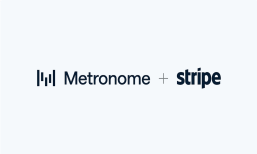But these coexisting trends have also raised new questions about where the friction points lay, and how to best address them. At first glance, said Ryan Frere, EVP and GM, B2B at Flywire, embracing electronic payments and third-party technologies may seem like the obvious first step to efficiency gains. But the reality, he told Karen Webster, is not so simple.
As B2B payments innovation makes progress, firms will have to make some difficult choices about how they do, and don’t, adopt tools designed to ease the pains of commercial payments. What’s more, FinTechs and other service providers will similarly have to determine their own paths in addressing the most pressing and persistent hurdles for corporate customers.
A Transparency Headache
Among the most critical challenges for both AP and AR teams is a lack of transaction transparency. This is by no means an unfamiliar pain point for the B2B payment sector, and indeed has been a focus of many innovation efforts. Transparency remains a key value proposition of emerging real-time payment infrastructure, for instance – and according to Frere, it may wind up becoming an essential component to the adoption of faster payments in the B2B ecosystem, particularly for AR departments struggling to field payment inquiries from their customers.
“All of a sudden you have finance teams answering customer calls asking ‘Where’s my money?’ or ‘How do I make this payment?’ or ‘Did you get my payment?’” noted Frere. “Transparency into that data is really critical at the end of the day.”
Advertisement: Scroll to Continue
But there is a new phenomenon brewing in the commercial payments space that Frere said reflects just how important data and transparency – and not necessarily speed – are to AR teams.
While the past year has seen an explosion in conversations about the opportunity for businesses to steer their customers away from paper checks (driven largely by the inability to physically enter offices to collect the mail), Frere said he’s now seeing more businesses embracing solutions like lockboxes that can allow a company to continue receiving checks while still being able to access electronic data about the transaction.
“As long as you can access information around the funds, you can provide a solution that’s data-driven and transparent. Maybe it takes longer for the check to clear, but at least they now have visibility into a flow that was traditionally very opaque,” he noted.
Shifting The Balance Back To AR
Despite efforts to take the crisis as an opportunity to rid B2B payments of checks once and for all, many companies on the receiving end of these transactions still lack the negotiating power to dictate how payments are made.
“I’ve yet to find a company that’s willing to sit down and say, ‘Absolutely not, we’re never going to accept a check, even if it means we don’t get paid,’” said Frere.
What’s more, businesses on the paying end often overlook the pain they add to their vendors and other business partners by sticking to paper. As a result, AR practices are forced to bend and accommodate customers’ AP preferences.
That’s beginning to change as innovators place greater emphasis on AR friction. Whether it’s RTP that can support access to transaction data for automated reconciliation, or lockbox tools to deliver more of a remote-deposit experience for AR teams that accept checks, businesses have more than one path to easing their biggest headaches.
Vendor Overload
As organizations determine the best way to ease B2B payment acceptance pains, their service providers have their own decisions to make about how to best service their clients.
Frere noted that FinTech adoption is a double-edged sword for many firms. While companies find comfort in the fact that technology partners exist to aid them in these efforts, embracing these vendors can actually make B2B payments even more complex – a reality made clear by The Smart Receivables Playbook: How B2B Technology Firms Can Bring Seamless Payments to the Back Office, a PYMNTS and Flywire collaboration.
“The second you start bringing a third party in, or another payment method, access to information and transparency of funds becomes more complicated,” Frere said, adding that this can be especially true for organizations operating across borders. Everything from FX to local compliance can throw a wrench into organizations’ global ambitions, he said. While payments technology should enable that growth, it can too often add extra complexity to the mix.
As businesses decide whether to encourage electronic payments or adjust AR practices to support paper checks – and as their FinTech providers navigate how to support B2B payments efficiency without standing in the way – the B2B payment ecosystem will be wise to keep the big picture in mind.
As Frere noted, it’s important to empower companies on both the AP and AR side of operations to mitigate risk and promote healthy cash flow. Once businesses discover the best path forward, they can begin to turn operational challenges into strategic opportunities.




